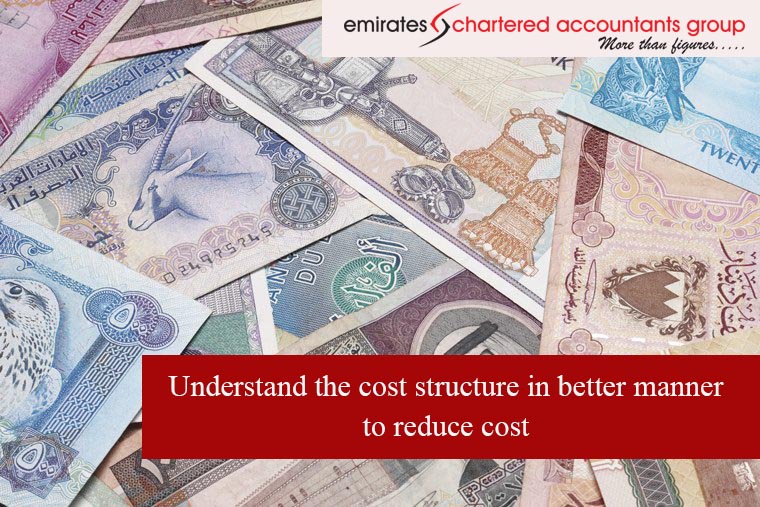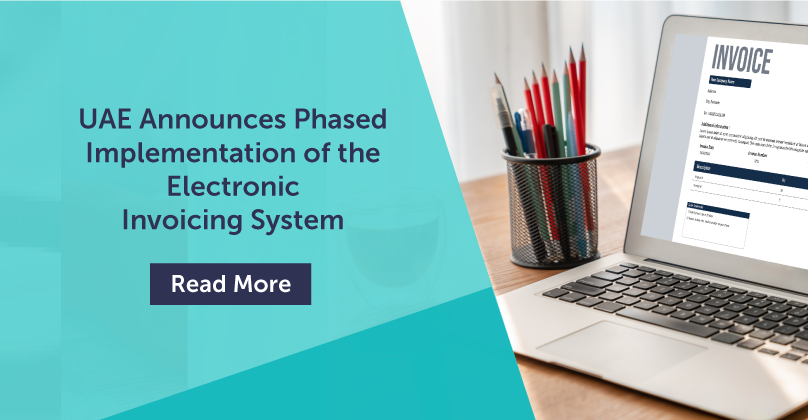
Innovative Cost-Saving Ideas
GCC countries are going through challenging times economically because of heavy reduction in oil prices, strengthening of dollar etc. Hence under such challenging times, it is very important for any business to understand its cost structure thoroughly and also look for areas where cost can be reduced. There are financial auditors in Dubai, UAE who can help you for understanding the cost structures. Any businesses have two types of costs – Fixed Cost and Variable Cost.
Variable cost is incurred only when there are sales orders. Fixed costs are incurred irrespective of sales orders. Hence it is important to analyze and understand various components of fixed cost to explore the possibility of reducing overall fixed overheads particularly when the utilization of assets for which they are incurred is not optimum. Similarly, various components of variable cost should be analyzed to explore the possibility of reducing it at the per-unit level by measuring the value addition made and the cost incurred in that regard.
Tips for understanding the cost structure in a better manner and for reducing cost according to Top listed auditors in Dubai:
- Annual Rate Contract: If a company is buying particular items in small quantity per order and at the same time commit to the supplier to buy only from that supplier, then the company can enter into an annual rate contract with that supplier and negotiate a better rate.
- Shared services - Volume driven: There are many groups in UAE having diversified business with multiple companies. Such group needs to follow the concept of shared services in order to reduce cost. Such groups can centralize many backoffice departments such as HR, Accounts, IT, Purchase, logistics, etc.
- Sub-Contracting: Many companies are subcontracting various services. An analysis is required to be made whether such services need to be outsourced. If the amount of services required is large enough then it is advisable to set-up in-house services if the company can commit capital and utilization of these services is going to be regular. For example, a company has a large fleet of vehicles can go for in-house maintenance service instead of outsourcing the same and can reduce the cost to a great extent.
- Asset Utilization: There are many in-house facilities set-up by companies to save cost. However during the crisis, when the company’s volume is down then the company needs to review whether the asset is utilized at an optimum level. If the answer is in negative then it is better to outsource such services and thereby save the cost of maintaining such an asset. This concept applies not only to machinery but also to manpower as well.
- Understanding your finance cost: The Company should explore the possibility of reducing the borrowing cost in terms of interest mainly by repaying the costlier loans by borrowing loan at a reduced cost. The company can also explore the possibility of getting supplier’s LC discounted at a low rate of less than 3% by getting the LC discounted from the multinational bank.
- Allocation of Common Fixed overheads among products / Projects / Services based on volume or output: In case of companies having multiple products or divisions or depts or projects, the common fixed overhead cost is allocated traditionally based on volume or output of each product or project or service or dept as per the marginal costing concept. However when we allocate common overhead cost based on such criteria then it gives a totally wrong picture of a product’s or project’s or dept’s costing. A particular product or project or dept’s share in the total fixed overhead should be determined based on utilization made by that product of that fixed overhead resource which is possible to measure only through Activity-based costing (ABC).
- Fundamentals of ABC: It is a model of cost allocation. The basic idea in cost modeling is to tie the cost to the objects that are causing them to i.e the cause-effect relationships. Thus ideally a product that actually consumes a large quantity of resources should be reported as expensive to produce. Four general terms are sufficient for an understanding of the fundamentals of ABC. These are:
Cost objects: These are the target of cost calculation such as products, services, market, customers, etc.
Resources: They are used or perform work that gives rise to costs eg: machinery, computer, personnel.
Activities: These are the sort of work the resources perform eg: Setting up the machine, ordering raw material, designing a computer system, etc.
Cost Drivers: These are the means by which the activities are characterized and relinked with the objects being costed eg: number of set-ups, number of manufacturing orders, etc.
There are many case studies which have proved that activity-based costing is a more effective and practical method to allocate common overheads among products / Projects/depts. Hence when the businesses try to understand the correct cost structure of a product or project or dept then it must use activity-based costing as a tool to get a clear picture.
- Benchmarking: is the formal process of measuring and comparing a company’s operations, products, and services against those of top performers both within and outside the company’s primary industry. It is a management practice that specifically directs a company’s focus outside its own walls and is aimed squarely at the marketplace and its competition. It helps companies cultivate a culture of change, adaptation and continuous improvement. It can be instrumental in increasing the efficiency of the company and thereby reducing cost.
- Energy Audit: needs to be conducted by manufacturing, retail and hospitality companies to explore the possibility of reducing the utility bills in the long term by using solar energy.
- Linking financial MIS with operational MIS: Financial MIS in the form of Profit & loss statement can help companies to understand its financial performance for a particular period. It can help to understand the various variable cost and the fixed cost incurred. However, it cannot help to understand as to why the company has incurred such cost. In order to understand the reason for incurring this cost, the company needs to link the operational MIS given by various operational depts with its financial MIS. Hence, for example, a manufacturing company has a variable cost of wages of 1000 labourers and fixed overheads towards such labours such as labour accommodation rent, visa cost etc. If the company wants to understand why it is having labour cost and other cost associated with it, then it needs to review the production department’s report which shows the productivity of these 1000 labourers in terms of how they are deployed, how many shifts the manufacturing plant is running, how many units are being produced each month by these 1000 labourers, etc. Such analysis can help to justify the need for 1000 labourers for the company.
- Understanding Advertisement Expenses: The purpose of incurring this expense is to build the brand of the company, to do marketing of its products and thereby generate or improve sales of the company. However, it is important to analyze how a particular ad campaign or advertisement is helping the company to generate sales. Unless this cause-effect analysis is done it is difficult to justify the need for this type of expense. Many companies allocate budget for advertisement expenses as a % of sales. However, the purpose of incurring this type of expense is to generate sales. Hence companies should do another way around i.e based on the nature of advertisement and expenses incurred sales target should be fixed.
- Customer-wise Profitability: It is very important for any company to understand how much profit its various customers are contributing to the total profitability of the company. Companies who analyze the customer-wise profitability have found that customers who have given large orders have contributed less to the profitability of the company and customers who have given small or medium size orders have contributed to the profitability of the company in a big way. Similarly in case of businesses which are spread across different segments and in different geographies when they have analyzed that same customer or its subsidiary have given business in the different segment and from different geographies where the company exist then the contribution of that particular customer to the sales and profitability of entire group as a whole is large enough. Hence such analyze should be made by businesses to understand the source of profitability in terms of customers.
A clear understanding of the structure of the cost of business, exploring the possibility to reduce cost by studying the above areas and implementing the suggestions given can help businesses to become more competitive which is the need of the hour in today’s challenging business environment.
For VAT Services in Dubai:
Mr. Pradeep Sai
pradeep.sai@claemirates.com
+971 556530001
For VAT Services in Abu Dhabi:
CA Harikrishnan
T: +971 26435 193
M: +971 569940174
E: Harikrishnan.Nampoothiry@claemirates.com




